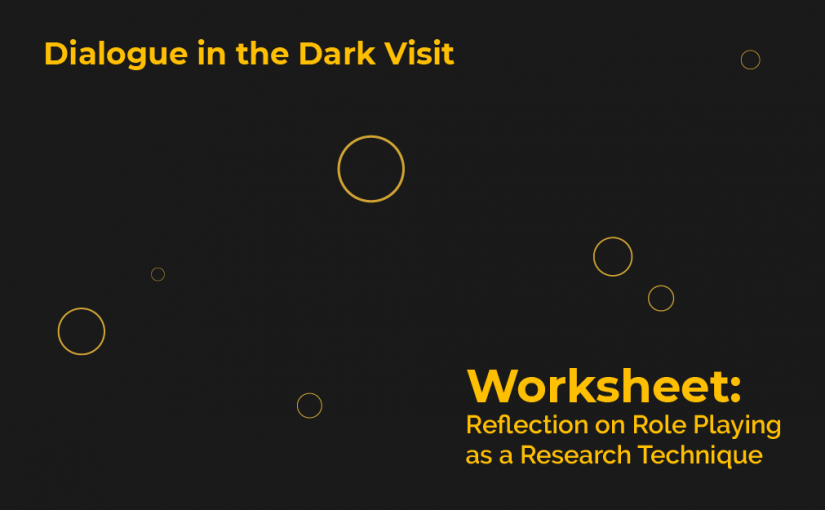Briefly share your experience going through Dialogue in the Dark. What were some of the feelings, thoughts, challenges and insights gained while role playing a blind person?
Dialogue in the Dark allows visitors to go through the world visually challenged. This helped us be more aware of different senses like texture, sounds, smells, and so on.
Before going into the exhibition, we were asked to do a puzzle. One person will be blindfolded and the partner has to describe where to place the puzzle piece. Halfway through the activity I realized my partner does not have an overall image of what is on the puzzle or how many pieces were needed. I have overlooked the fact that she would want a general idea of what the puzzle would be like.
The exhibition included getting to try ordering and eating in a cafe in the dark. It stuck with me how the clerk described the cookie as palm size. In the light we would have been able to see the cookie and estimate the size. This helped me realize that detailed descriptions for visualizing an object is important for the visually challenged.
One of the questions I always had in mind was what is the best way to describe a scenery to someone who is visually challenged. Another related concern was how would I describe color. After going through the exhibition, I realized I could translate the visual experience into other sensations. For example, red could be explained as eating spiced on a hot sunny day.
Drawing on your experience, can you think and list some of the benefits inherent in the design research technique of role playing?
The biggest benefit that comes from role playing is how it can give you perspective. By placing yourself in the shoes of the user, you can experience it the way it was intended to be.
The exhibition really helped me gain perspective on what it was like to be visually challenged. For instance, there was an activity where we had to cross a road. The tactile paving and beeping from the traffic light helped us know where the road starts and when we can start crossing. Despite being a simulation it was still terrifying because I could not know how long the crosswalk is nor how many seconds I had to cross. It would be great if the traffic light could count the seconds and give the length of the crosswalk along with an estimate average number of steps it would take a person to cross it. Without the role playing in the exhibition, I would not have been able to attain this perspective.
Can you think of some contexts where role-playing can be useful to help discover and define design challenges or contribute to the development of design solutions?
Adding on to the idea that role playing allows users to get a fresh perspective, a context where role-playing would be helpful is the refining of a product development. A product is made to bring convenience. Thus, it should be easy and intuitive to use for everyone. ‘Everyone’ will mean taking into consideration different growth backgrounds, different body sizes and shapes, and so on. Role-playing will help designers to take into consideration various users and create appropriate features accordingly.
Another instance would be user experience in digital media (websites or apps), packaging, and even exhibitions. For example, Apple takes great care into the consumer’s experience when they unpack their products to the extent where they have a devoted to opening hundreds of prototype boxes. Their effort pays off because most consumers are unable to throw away the Apple packaging boxes. Role-playing is crucial in exhibition designs because every factor including lights or way the audience is allowed to interact with the space matters.
